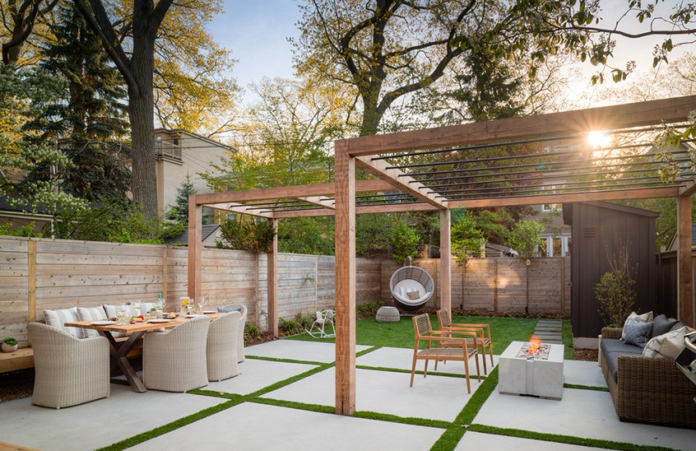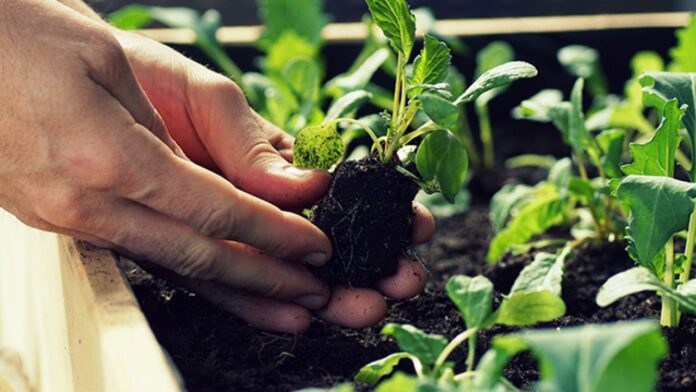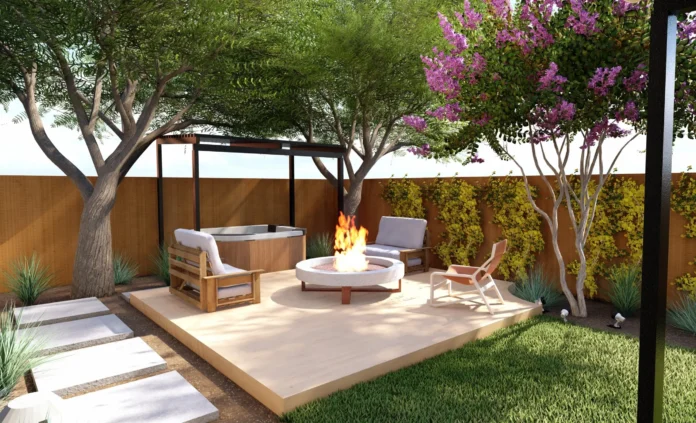With summer in full swing, many households are now upgrading their garden space. Enjoy entertaining friends and family in style, with our research on the current garden trends that you can implement in your DIY projects.
With many more spending their savings on garden and home renovations over that holiday abroad,
We want you to make the most out of your space this year. Whether you want to grow your kitchen garden or build composite decking, we have all the tips and tricks to create an oasis for entertaining this summer. Let’s take a look at this 2024 guide to garden trends.
Embracing Colour

When adding colour to your garden, we advise you to look at the permanent fixtures you already have and work out what colours will complement them. A prominent current trend is using bright and bold colours, such as pinks, oranges, yellows, and greens. These colours stand out against a darker decking colour.
Garden Zoning
Make dedicated sections for seating and entertaining with zones. Zoning is essentially using different materials to create patio areas for outdoor activities. These can include:
- Kids’ play areas – if you have children, then an outdoor play area is a must. You can build a zone that doesn’t take away the aesthetics of your garden space but still provides your kids with an area they can call their own.
- Chill out space – carve out a space for quality ‘you time.’ Add some candles and soft furnishings to help you relax; perfect for unwinding after a long day.
- Kitchen garden – grow your patch of produce.
- Entertaining – make the most of the sunshine and have friends and family over for a garden party. Add a BBQ and a dining set and you’re away.
- Create a section specifically for storage – this is important for storing all your soft furnishings during the cooler months and for keeping your gardening tools in.
Urban Gardening

Creating a kitchen garden is a popular growing trend within the world of gardening, providing homeowners with a space to grow their organic produce. With many opting for a plant-based diet in the last few years, coupled with the ever-increasing food prices, it’s no surprise that this remains at the forefront of the modern garden.
We have outlined 10 top tips on how you can create different kitchen garden styles.
- Start your kitchen garden at the right time – this is very important when embarking on growing your produce, as different seeds and plants have different seasons when you can pot them. Early spring is the best time of year to get the full advantage from your garden. Decide on the plot size, and make sure you will be able to keep on top of this size as the upkeep of a garden can be strenuous.
- Choosing the right position – plants need a good amount of light and water, so the space where you decide to pot will determine what you can grow. Plants need plenty of room between them for their full growth potential. If you are unsure of the distance you need to leave between plants, check the back of the seed packet. Think about the areas of your garden that offer wind protection, the sunny spots to best capture light and fertile soil that’s enriched with compost.
- Decide what fruit and veg you want to grow – make a list of all your favourites but look carefully at the space you have and be realistic about what your growing conditions are and narrow your selection.
- Get the best value for your garden – swap your seeds with friends and family to create variety. Why not grow your salad leaves? This is much cheaper than supermarket-bought salad! If you are short on space, you can grow plants vertically, such as certain vegetables and herbs.
- Prepare your soil – it is important and useful to know the pH levels of your soil, as it will determine what you can grow effectively in your plot. Ensure the plot is fully weeded and work the soil, breaking up hard lumps. Lastly, make sure the soil is treated with manure or compost.
- Raised beds – a fabulous fixture for growing small plots of vegetables. Raised beds can help with gardens where the soil isn’t the best quality and can act as a barrier for pests.
- Decide on the layout – every garden is different, so when planning a plot, make sure you have the best design for your space. Allocate areas for different fruits and veg.
- Create an entrance – include pathways between the beds to ensure there is access for harvesting, weeding and planting.
- Grow from seeds – they are the lowest cost for kitchen gardens. We advise a combination of seeds and full-grown plants to provide you with a fuller look.
- Grow from scraps – many vegetables can be repurposed, so say you don’t eat them once harvested, you can simply replant them. The vegetables you can replant can include leeks, spring onions, celery, turnips and cabbage – the list goes on.
Bringing Interior Decoration Outside

Creating a space that is an extension of your indoor living space is a massive trend. Many are incorporating sofas, throws, cushions, and rugs into their patio spaces in the same way they would their living room. With more people renovating and extending their current homes and fewer moving houses, people’s behaviours within the home have adapted and gardens are now thought of as a ‘fifth room’.
Wildlife Gardens
Many more are attempting wildflower gardens, creating meadow-like flower beds, and embracing the natural look. You don’t need a massive plot to create a wildflower patch smaller areas can look more intimate and are easier to maintain. It is a good idea when planting wildflowers to mix shrubs in your borders. The mass blocking out of areas with a selection of plants helps to create a looser style.
What garden trend are you leaning towards for summer 2024?









